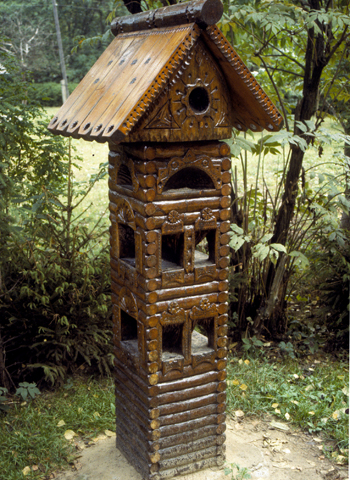Cheek-Chireek from Moscow
I recently received an email from some friends in Moscow with this fantastic shot of a common visitor to the homemade feeder outside their second story apartment window. The Great Tit (Parus major), is a member of the Titmouse Family and is common to the woodlands of Europe and Asia. My friend, Sasha had constructed a bird feeder, and now he and Irina can watch and photograph birds from their kitchen window.
Photo taken by Sasha Panov
These birds have been shown to be quite adaptable to urban living. One study found that male Great Tits will alter the structure and pitch frequency of their mating songs relative to the surrounding levels of traffic and other urban noise.
Borrowed from Wikipedia–a Great Tit nestling. Is this cute or what?
These little birds generally fledge not even 3 weeks after hatching. Considering that an average brood size is about 8 chicks, the parents have their work cut out for them and must procure as many as 500 or more insects and caterpillars for the fledglings. Click here for more info.
Moscow is in what is referred to as Central European Russia and its environs consist of mixed and broadleaf forests. Some of the more common birds of the Moscow Region are the Eurasian Crow (Corvus corone), White Stork (Ciconia ciconia), Northern Swifts (Apus apus), and the Eurasion Cuckoo (Cuculus canorus). The 3 images below are taken from Wikipedia. In the first photo a Reed Warbler feeds an itsy-bitsy cuckoo young’un.
Cuckoo youngster and White Storks
Hooded Crow
I couldn’t find any stats on how many birders there are in the area around Moscow, but I would suspect quite a few. While there may not be as many national conservation organizations as in the U.S., the Russian people have always maintained a closeness with nature in a way that many Americans have not. Almost any Russian can tell you what mushrooms and berries to gather, even what plant leaves can be used for various home medicinal remedies.
Come Friday afternoon, the train stations swell with folks heading out of the city to their dachas, or to nearby parks, or villages. Sunday afternoon, buses are loaded with people heading back into the city, carrying buckets of berries, mushrooms, potatoes, carrots, onions, cucumbers, tomatoes, and herbs; foods all gathered in the forests or grown in dacha gardens. In my closet hangs a cherished daypack, stained purple with berry juice from blueberries and waterberries I had gathered with friends in Russia, and put in double plastic bags (paketi), but which, obviously, got squished in transportation.
There are several parks or “green” (protected natural) areas outside Moscow, which are accessible by train or bus. Losiny Ostrov (Moose Island) is Russia’s first National Park and located just outside Moscow. Yes, as the name implies, moose do abound there and will wander into nearby towns and stand in the middle of the road, blocking traffic, including trolleys.
I don’t know how squirrel-proof these are, but you can’t beat the craftsmanship and care that went into these hand-carved bird feeders that I saw in Losiny Ostrov.
As birding and bird conservation gains global momentum there are more organizations that have been established in Europe and Russia, dedicated to bringing conservation awareness to the public. One such organization is Bird Life International, which has partnerships with other bird organizations throughout the world. In Russia, the Russian Bird Conservation Union (RBCU) acts as the Audubon Society does in the U.S. or the Royal Society for the Protection of Birds in the U.K.. It works to educate and involve the public in bird conservation efforts.
One such program is Spring Alive. Similar to the Backyard Bird Count, this program invites Moscow citizens to join other cities in Europe and get their binos out and take a count of the migrating birds they see throughout the spring (Feb. 1st to end of May/June). All the counts are submitted to Bird Life International and used to help monitor bird species populations. Right now the Spring Alive site is in Russian but you still have some fun with a couple of games on the site if you click here.
And, of course, those good ol’ milk cartons, worldwide, serve an important secondary function.
Moloko is pronounced “Muh-lah-koh” with the stress on the last syllable.
Some fun Russian words for bird lovers:
Cheek-chireek = chirp-chirp, tweet-tweet
Pteetsa = bird
Pteetsi = birds
Aitso = egg
Gnyezdo = nest
Kormushka = bird feeder
Ya liubliu pteetz! = I love birds!

















